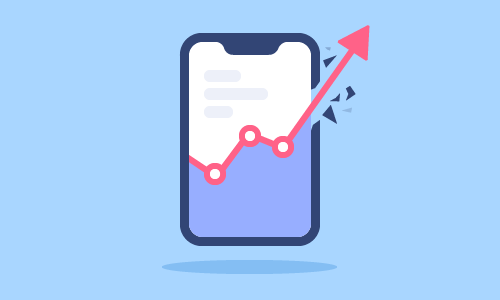
Understanding and tracking your website’s conversion rate represents one of the best ways to increase the return on investment (ROI) of your digital marketing and advertising efforts.
All digital marketing and advertising tactics aim to encourage visitors to convert — to take the action you want them to take. A conversion may be purchasing your product or signing up for your service, but it can also describe actions that move consumers along the path to purchase. For instance, a conversion could be reading a blog post, filling out an online form, or downloading a piece of content.
For any of these conversion types, you can measure and track your conversion rate or the percentage of website visitors that successfully take the desired action. Read on to learn how to calculate your conversion rate and strategies for improving it.
How to Calculate Your Conversion Rate
To calculate your website’s conversion rate, divide the number of website visitors who converted (took the action you want) by the total number of visitors who came to your website in the same time frame. You can get these numbers from your online analytics platform (such as Google Analytics) or the digital advertising platform you use.
For example, if you’d like to measure the conversion rate for people who downloaded your digital brochure last month, you can do the following calculation:
(Number of visitors who downloaded the brochure last month / Total number of website visitors last month) * 100% = Conversion Rate
Let’s put some numbers to this example. Let’s say your website had a total of 16,000 visitors last month, and 1,700 people downloaded your digital brochure in the same period. We can do the following formula:
(1,700 / 16,000) * 100% = 10.6%
This would show that last month, you achieved a conversion rate of 10.6% for your digital brochure — a significant key performance indicator (KPI) for gauging the success of marketing and social media advertising you’ve used to promote the brochure.
Once you know how to calculate conversion rate, you can now strategize and optimize your website to help guide visitors toward the actions you want them to take.
Ways to Improve Your Conversion Rate
Try some of the following strategies to improve your website’s conversion rate.
1. Make Your Calls-to-Action (CTAs) Clear and Specific
A good call-to-action (CTA) should be brief, clear, and specific to compel the reader to act.
A vague or high-level CTA like “Get in touch with us!” doesn’t give the reader specific instruction about what steps to take next. A distinct CTA, such as “Call us at 1-800-xxxx to ask for a free consultation,” gives the reader a specific path with an immediate next step to act. Every page of your website should have a single clear CTA, whether it’s to read a blog post, visit another page of the site, or contact your business.
To help boost your conversion rate, audit your website to review the CTA on each page, adding a CTA to any page that doesn’t have one. Identify existing, vague CTAs that lack compelling language and update them to make them clear and specific. That can go a long way toward helping your website visitors feel motivated to take the next step toward conversion!
2. Create Optimized Landing Pages for UX
When you promote your brand across online channels and social media, it’s critical to consider the user experience (UX) for visitors. Every time you direct users to visit your website, you are offering them an experience. If they have a smooth experience on your site, they are more likely to follow the steps to conversion. If they have a choppy or confusing experience, they are more likely to leave your site and go elsewhere.
One factor that can lower your UX, and therefore your conversion rate, involves lacking a specific path to take when users land on your website. Let’s say you are running a campaign to get more subscribers to your email newsletter. If your social media ads link to your homepage, how will visitors know what to do when they land there?
To improve the UX, create a dedicated landing page about signing up for the email newsletter. Include written copy about what value your newsletter offers and an online form (with a compelling CTA!) where they can enter their email to sign up. Now, when you promote your brand’s newsletter on social media, you can link directly to this landing page. Using dedicated landing pages for specific conversion goals helps create a consistent experience and reduces the number of steps a user takes to convert.
3. A/B Test the Visual Elements of Your Site
The visual aspects of your website play a major role in guiding visitors along their journey and making them feel motivated to convert.
To improve your conversion rate, you can A/B test various elements on your site to see what your audience responds to best. A/B testing (or split testing) is a process in which you set up two variations of a website page (variation A and variation B) and try each version to see which one results in more conversions. Many CRO software solutions have tools that allow you to set up multiple variations of a website or landing page and automate the process of A/B testing them. The software will randomly split your website traffic between the two variations (half of your website visitors will see version A, and half will see version B). At the end of the test period, you will receive reporting and metrics showing how visitors behaved on each page and which variation received more conversions.
Try A/B testing the placement and color of your buttons, the images on a landing page, and the CTA sentence. You can A/B test virtually any elements on your website and continue to push your conversion rate higher.












